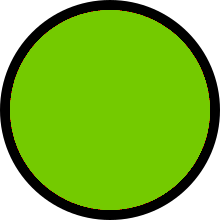Weather in January in The Julian Alps
Thinking about venturing to the Julian Alps this January and curious about the weather conditions to expect? This page holds all the key information you seek, responding to your question:
What is the weather like in the Julian Alps in January?
The Julian Alps is a region in Slovenia. January in the Julian Alps generally has cold temperatures, with moderate precipitation. January is a winter month.
Temperatures
You can expect cold maximum daytime temperatures of around 3°C and nighttime temperatures around -5°C in Bled. To learn more about the conditions in specific areas of the Julian Alps in January, check out the map below. Typically, it's the chilliest month of the year. Making it a great time for staying indoors and enjoying the warmth. Make sure you're prepared by packing the right winter outfits.To explore the conditions in the Julian Alps in more detail, check the map below.
Precipitation
In January, precipitation varies across different areas. From moderate snow/rainfall in Jesenice with an average of 64 mm to moderate snow/rainfall in Bohinj with 82 mm. Looking at the climate data spanning the last 30 years, this month usually has the lowest rainfall in Bled, marking it as the year's driest month.Average sunshine
Bled experiences limited sunny days, amounting to roughly 91 hours of sunshine. This makes it perfect for those who prefer dimmer, cloudier settings rather than intense sunlit daysFor an in-depth overview of the yearly conditions, do visit our the Julian Alps climate page.
Where to go in the Julian Alps in January
 perfect weather
perfect weather
 pleasant
pleasant
 tolerable
tolerable
 unpleasant
unpleasant
 poor
poor
Select a Month of Interest
Check the conditions for any month of the year.
For a detailed overview over the year and the best time to visit Slovenia, check out our Julian Alps's climate page.
Popular destinations
What is the weather like in January for the 5 most popular destinations in the Julian Alps?
Bled
In January Bled generally has low temperatures with maximum daytime temperatures around 3°C, minimum nighttime temperatures around -5°C and moderate monthly snow/rainfall. So on average the conditions are poor that month.
 Max temperature
Max temperature
 Max temp
Max temp
 Min temperature
Min temperature
 Min temp
Min temp
Kranjska Gora
In January Kranjska Gora generally has very low temperatures with maximum daytime temperatures around 2°C, minimum nighttime temperatures around -6°C and moderate monthly snow/rainfall. So on average the conditions are poor that month.
 Max temperature
Max temperature
 Max temp
Max temp
 Min temperature
Min temperature
 Min temp
Min temp
Bohinj
In January Bohinj generally has low temperatures with maximum daytime temperatures around 3°C, minimum nighttime temperatures around -5°C and moderate monthly snow/rainfall. So on average the conditions are poor that month.
 Max temperature
Max temperature
 Max temp
Max temp
 Min temperature
Min temperature
 Min temp
Min temp
Radovljica
In January Radovljica generally has low temperatures with maximum daytime temperatures around 3°C, minimum nighttime temperatures around -5°C and moderate monthly snow/rainfall. So on average the conditions are poor that month.
 Max temperature
Max temperature
 Max temp
Max temp
 Min temperature
Min temperature
 Min temp
Min temp
Jesenice
In January Jesenice generally has low temperatures with maximum daytime temperatures around 2°C, minimum nighttime temperatures around -5°C and moderate monthly snow/rainfall. So on average the conditions are poor that month.
 Max temperature
Max temperature
 Max temp
Max temp
 Min temperature
Min temperature
 Min temp
Min temp
Is your destination not in the list? Have a look at other destinations in the Julian Alps, in Slovenia.
Is January the best time to visit the Julian Alps?
Given the typically poor weather conditions in Bled, January may not be the ideal time to visit the Julian Alps.
On average, the best time to visit the Julian Alps is in June, July and August with generally pleasant weather in Bled. In contrast, January, February, March, November and December tend to have poor weather conditions.
Interested in more climate information?
We have much more information about the climate in the Julian Alps.
Weather and climate has detailed information for every country in the world. Are you going to Slovenia? Get detailed historical weather averages for many cities in Slovenia.
Not sure yet where to go? We now have a tool which recommends destinations that suit your ideal travel conditions. Find out where to go with our weather planner.